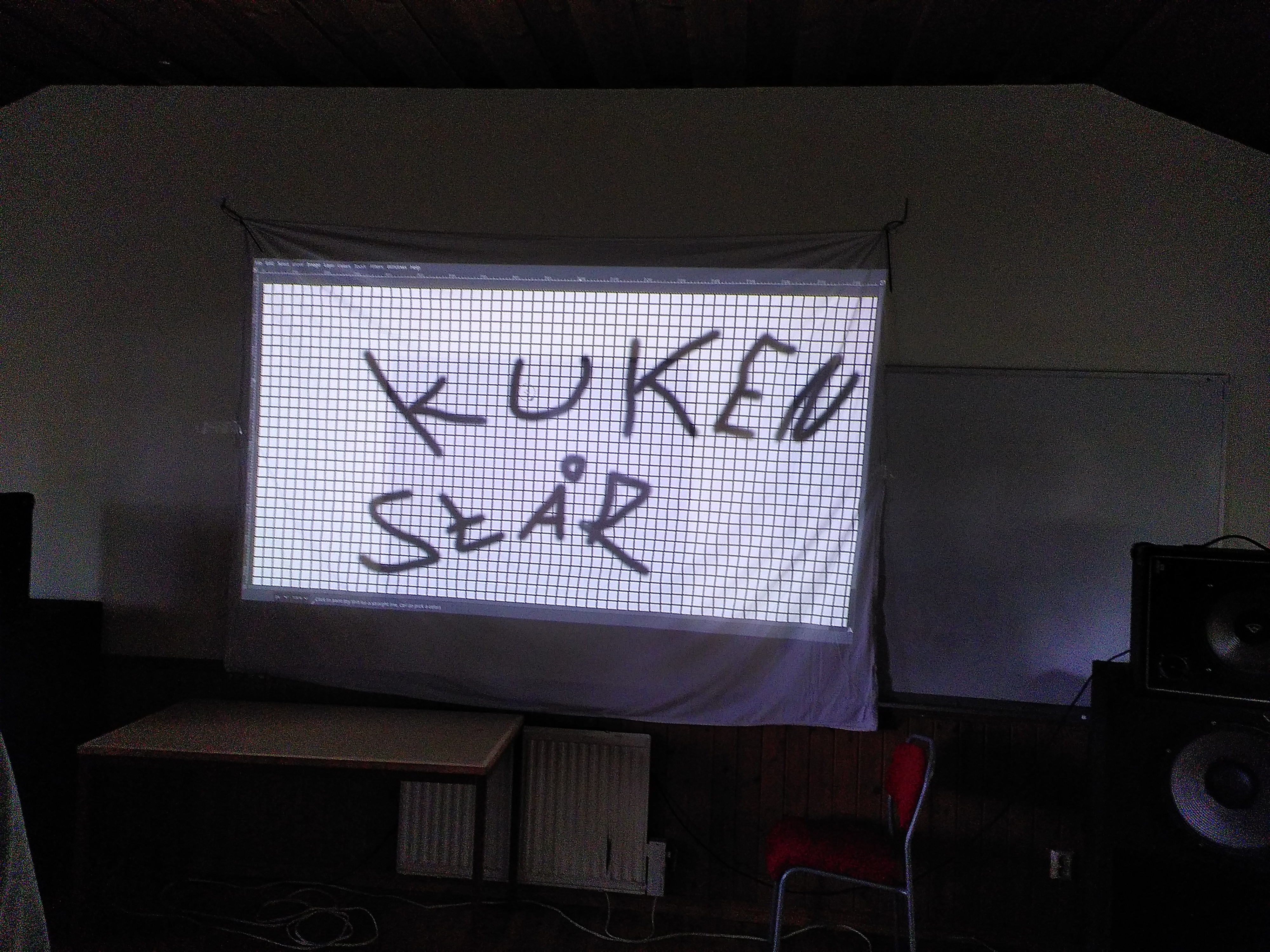In all honesty, I use the arch manual to troubleshoot all distros. It is well written and has the info you need and no more.
My steps for looking up something are usually
- Check the arch wiki
- Check the gentoo wiki
- Search for something related to my own distro
- Search for anything else
- Cry
- Start preparing your soul to reading Linux from scratch
- Compile shit yourslef with custom made templates while crying and praying this n-th time
makewill NOT throw a dependency error.
- Learn programming, write your own (hacky) solution
- Learn better programming, write your own proper solution, submit patch to maintainer
- Compile shit yourslef with custom made templates while crying and praying this n-th time
PSA: it stands for Read The FINE Manual
Now canonically switched to “read the friendly manual” which I find more patronizing
Read the Fucking Manual
reading comprehension is a very useful day to day skill.
I think zoomies just want to watch a video. I’m not trying to just insult them but I’ve had so many times people linking and recommending guide videos that are 15 minute long and full of dumb filler shit when an article would’ve been much better and quicker.
Yeah, I can’t stand technical videos for that reason. I just want the content and nothing more.
I really dislike video tutorials. Just let me read a manual or the readme of a git repository.
“You want to actually read documentation? Hokay.”
*links to Discord*
you sunova… :D
This is why nerds who don’t like literature class are missing out. If you can figure out the meaning of some inscrutable poem most documentation should be a breeze.
IME the skills needed to parse the poetry class stuff and the documentation wiki are distinct because I found that math, eng and software materials were always literal in what they were saying but I didn’t pick up on that because I was looking for a hidden meaning or secondary property or subtext. I had to rewire my brain for switching between different types of texts.
I get that, and I thought the same until I started writing documentation myself and found people misinterpreting what I thought were very clear instructions. Every piece of writing has subtext and secondary meaning, even technical docs.
Even understanding that the person writing the docs didn’t speak English as a first language helps me find clues to fill in the gaps that exist in all documentation. And that’s a skill I first picked up in literature class.
But that’s just me.
Gotta admin the Arch Linux wiki is an impressive piece of work since long.
Unlike the Nixos wiki which is utterly useless. Yes, I know why. Yes, I know they want to make a new better one.
arch and gentoo wikis are really, really good.
Well, to be fair, it’s an AMAZING manual.
I use Arch, Browse The Wiki.
I used to have a t-shirt that said RTFM, so useful as a linux tech😃. If someone asked something, I’d just point at the shirt jokingly and tell them where the documentation was
So it works, works because Arch isn’t for newbs
You know liquid nitrogen cooling can get you some insane cinebench scores, but you can’t just pop a liquid nitrogen cooler in your PC and expect to boost your framerates. You need to disable so many safety things and if you don’t know why they were there in the first place you’re going to permanently damage your CPU.
Archlinux is that but for software and because it’s software there’s no physical barrier to entry. Arch is powerful, but if you don’t know what you’re doing you’re better off with fedora or debian’s hand holding.
My board lets me set vcore to 2V, what safety lol
If you actually measure voltages (I have), you’ll find out that that is not always true… in some cases, yes, in most cases, no. Depends from MB manufacturer and model. AMD chipsets usually allow this and the declared settings are what you can actually measure on the board. Intel though… nah, way too many failsafes in place to let you do whatever you want, even though the firmware will report that you’ve set it a certain way (Vcore = 2V, as in your case).
Mind doesn’t. At least I think. You know I’ve never checked. I better not. I’d probably break something. I know when to stay in my lane.
Besides the installer, in what ways do Debian and Fedora hold your hand?
- They come with apps like gnome software as standard, so you never interact with apt/rpm, flatpak or (barf) snap if you don’t want to. You might not even know which you’re installing.
- They come with all sorts of configuration utilities like networkd (In my gentoo days I used wpa_supplicant directly and had no desktop integration with the wifi configuration. I was kinda stupid lol. Don’t use a distro to impress people kids), gui tools to manage your users and groups and something called “firewall configuration” which I don’t know the package for but is preinstalled on my fedora kinoite machine. (They are available in the arch repos, but unless you know what you’re looking for you wouldn’t think to install them.)
- CUPS is preinstalled. If you don’t use an “unbloated to the point of madness” distro like arch or gentoo you’ve probably never heard of CUPS or interacted with it directly, but it’s the backbone of the linux (and macos) printing stack. In other words, printing should work out of the box wheras on arch that involves a trip to the arch wiki.
- Integration packages are preinstalled. Things like the daemon that allows youtube videos in firefox tabs to be controlled by the play button on your keyboard if it has one.
- Polkit is preinstalled, which allows applications to ask for sudo privileges and shows a popup box to the user asking their password. This is something you need to install manually on arch and gentoo, assuming you want that functionality and wouldn’t prefer to just only allow privilege escalation via sudo.
- Most packages which ship with systemd services on debian (eg apache2, snapd, docker) enable that service by default. On arch this is usually not the case.
- 3rd party debian and fedora repos ship binaries so once you’ve added them to your config they function identically to core packages. Most AUR packages have to be compiled from source either manually or through a helper like yay. (Note: there aren’t any helpers in the base system so you have to do at least one AUR build by hand before you get that part of the tech tree)
- Even bash auto-completion is an extra package on arch. No really, open a terminal on debian and then type
ls --then double press tab. It should suggest valid arguments. This isn’t a thing on arch unless you install thebash-completionpackage
They have far less failure points. Also, the AUR. None of them have anything remotely like that, which is also a big stability issue, but hey, it’s bleeding edge, so you should be prepared for that.
Debian is more or less like RHEL/Rocky… with RHEL being even more stable and taking even less risks. They update only if they have to and only security related issues. Otherwise, RHEL is feature fixed. You have to upgrade to a new version to get a new set of libraries and applications. Debian… yeah, they’re also feature fixed, but they sometimes update certain things that are required by most users, since Debian is also considered a desktop distro, not just a server distro.
Usually I’m not too phased by having to read something to learn, but damn if learning how to span video games over 3 monitors has been a daunting task for me.
xrandr is something I’ve never been able to wrap my head around.
xrandr is something I’ve never been able to wrap my head around.
Arandr?
It’s basically like a tool for controlling what X does or doesn’t… at least that’s how I see it (have never read a manual of what ot actually is).
It was like that 25 years ago. Same for Linux as for FreeBSD.
BSD users are even worse than Linux users if you ask me… back in the day I mean, have no idea if things have changed the past 10 years or so.
One thing I have learned using OpenBSD is actually reading the manpages first. After an install there’s a friendly mail from Theo, then afterboot(8) and intro(8) answers a lot of questions.
Let’s see how this goes - I’m almost there but I chickened out and got manjaro first to get a taste, next mission is pure arch!
deleted by creator










